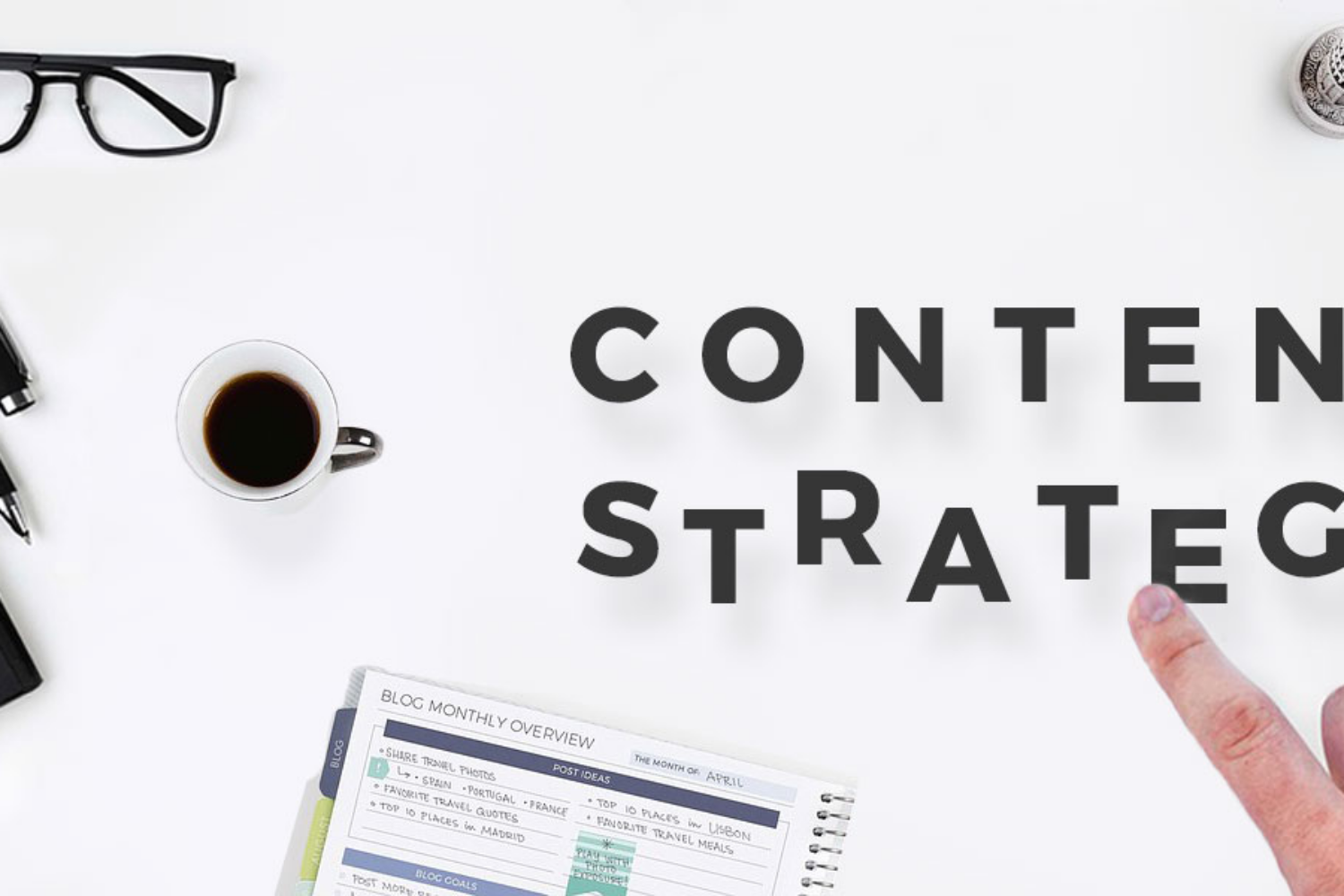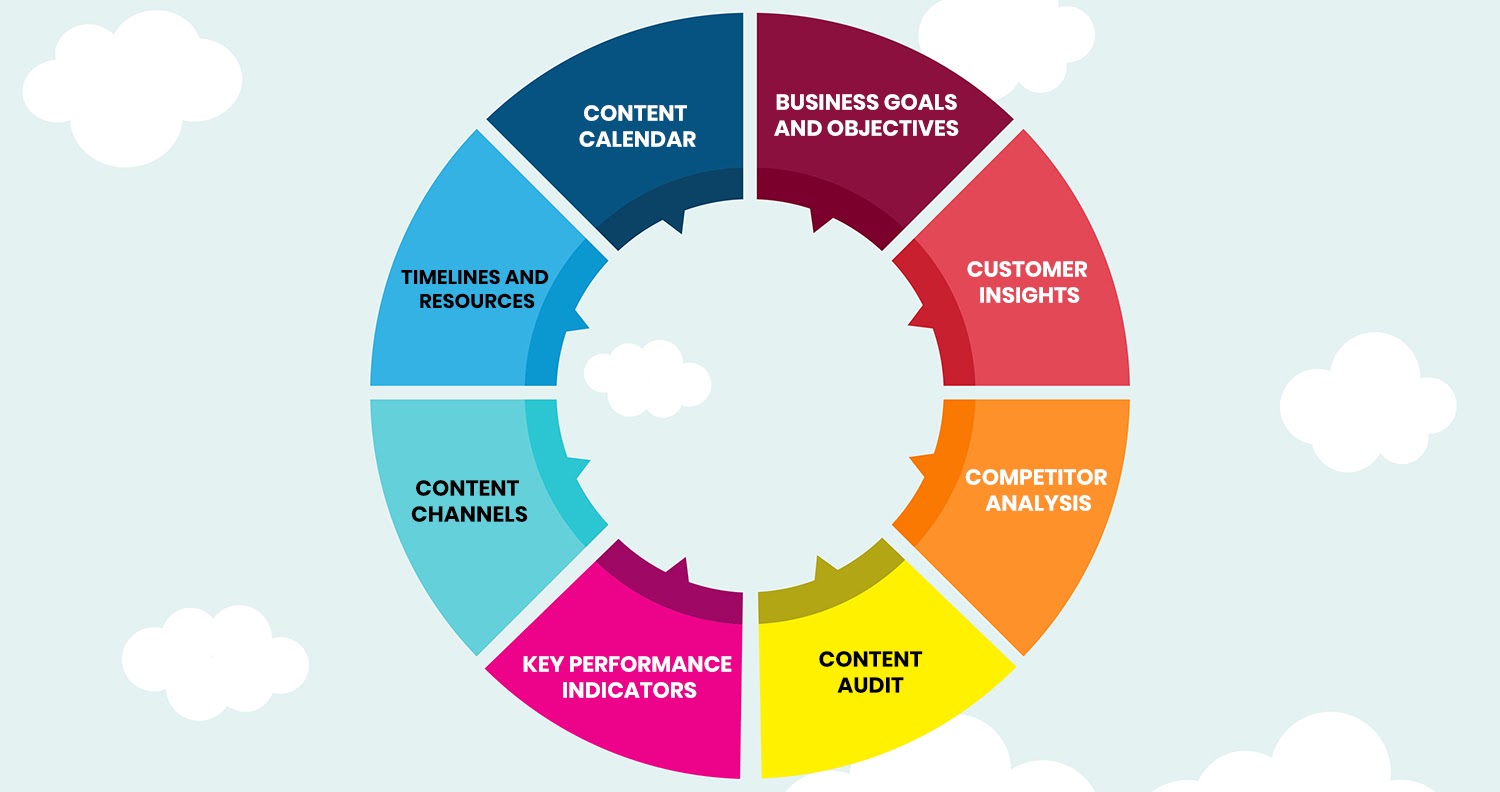Content is at the center of all digital marketing efforts. Be it optimizing pages for SEO or increasing credibility by providing quality content. Businesses require a robust content strategy to scale their business. Unfortunately, in the race to boost activity on your social media pages and satisfy the freshness criteria in SEO, companies are flooding their channels with directionless and low-quality content produced for the sake of it. To shape your content marketing efforts, you must have a good content strategy in place.
Let’s learn more about it.
What is a content strategy framework?
Content strategy is a well-thought-out plan of action for curating, distributing and reviewing content and how it correlates with the overarching business goals. Content planning should be based on strong fundamental knowledge, including the brand’s voice, tone and mission.
What should a content strategy include:
The content strategy need not be too complicated or over-achieving. It should be clear, consistent, and specific with outlined goals and measuring parameters. Some of the elements that a content strategy must include are:
- Business goals and objectives
- Customer insights
- Competitor analysis
- Content audit
- Key performance indicators
- Content channels
- Timelines and resources
- Content Calendar
Business goals and objectives
Vision and mission statements are at the core of any strategy. While setting out a content marketing strategy, decide what deliverables do you want your content to achieve?
Deciding on business goals and objectives helps you keep things in perspective while developing content, ensuring that your content marketing plan correlates with the overarching business objectives.
What are some of the common content marketing goals?
Some of the common, typical goals and objectives include:
- Increasing Revenue
- Boosting sales
- Showcase expertise for brand building
- Getting more traffic to the website
- SEO success
- Social media engagement
- Improved ROI on marketing costs
Customer insights
Once you’ve zeroed on what you wish to achieve with your content, think about who you are writing it for?
Go beyond just demographics such as age, income and geography. Ask psychographic questions such as:
- How can I make content that eases the decision process for the customer
- What content will educate my customers about the product?
- What content is most likely to catch their attention?
- What consumer problem am I addressing through my content?
How can I collect customer insights for my business?
- Website and social media analytics
- Customer feedback
- Conduct a survey
- Curate buyer personas
- Trace the customer purchase journey
Competitor Analysis
Analyze your competitors in the areas they are doing better than you by evaluating their blogs, social media profiles, videos and product descriptions. Then, go beyond the topics and themes, analyze the tone of their posts, what content is specifically being appreciated by the target audience and compare their content with yours to identify the gaps you can take advantage of and categories you can improve upon.
Content audit
Suppose you already have content on your blog or social media page. In that case, it is important to perform an extensive content audit to analyze what content will help you get closer to your business goals. Check for usability, knowledge level, accuracy and actionability of your content while performing a content audit.
How to perform a content audit?
- List the content present on various platforms such as blogs, videos, podcasts, social media, etc.
- Analyze backlinks, social shares, SEO rankings to see how the content is working out.
- Study the engagement and conversions from the content and related channels
- Identify the gaps in the content and state further improvements
Content channels
Determining the right channels is very important. However, instead of going wide on all the channels possible, it is better to focus all your efforts on a few chosen channels and build trust, engagement and converts there.
How to choose the content channels for your business?
The first step in choosing a content channel is determining where your target audience interacts online. If you are already present on multiple channels, identify which kind of content channel your customers react to the most. If your products are more conducive to visually-driven platforms, it makes more sense to be present on Instagram or Pinterest. Whereas, on the other hand, if your customers are decision-makers who are more likely to respond to a professional network, you can use Linkedin as a platform,
Key Performance Indicators
KPIs can help you track your content marketing efforts and measure their success. However, content is a wide term for blog posts, videos, infographics, social media posts and even podcasts. Thus, choosing the correct KPIs and aligning it with the business objective is crucial to any content strategy framework to measure business growth.
What are some common KPIs for content marketing?
- Unique page visits
- Time on page
- Inbound links
- Shares
- Engagement
- Subscribers
- Conversion rates
Timelines and resources
Your content strategy must also include what resources you will require to achieve the goals you’ve listed. Again, this comes as a handy reference to be shared across teams to ensure proper collaboration and successful implementation of your content strategy.
Some of the things to be included are:
- Overall timeline
- Dividing teams based on content type or content platforms
- Tools required for content creation and distribution
- Time allocated to content creation, distribution and audit
- The budget allocated to each team
Content calendar
A content calendar involves scheduling your content by laying out what you’ll be posting and when you’ll be posting it. You can prepare different content calendars for different channels.
With your content calendar ready, you can brainstorm your topics, plan your teams and have ample time to review the content before each post.
Learn more on how to prepare a content calendar in this blog.
Wrapping up…
So now that you know how to prepare a content strategy, get started today!
If you need any help, fill out our contact form because we’d love to work with you to boost your business.
By tracking the progress based on your content strategy, you’ll be able to tweak your plans to ensure that it’s always up to date and consistent with your required goals.


